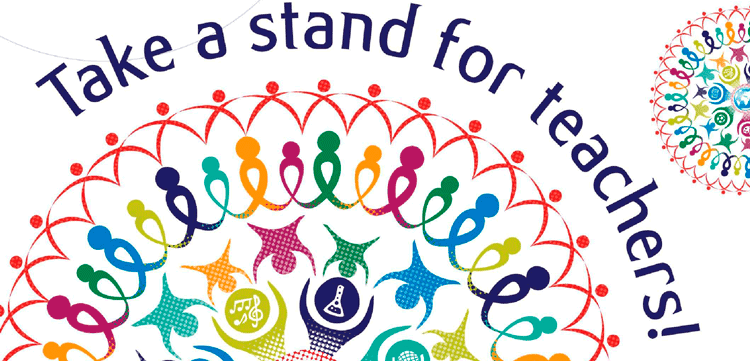The OxbridgeTEFL community launched the project of
how to teach pronunciation through ESL activities as a result of the necessity of creating specific tools -apart from the usual work on pronunciation through vocabulary activities- that would target Spanish learners' pronunciation.
What moved us was the conviction that nobody is tone-deaf and every one can have a good pronunciation! Oh, maybe not anyone...
All the conclusions were put in practice through a series of ESL activities where improving learners' pronunciation is the main aim and objective. Some of the main points about how to teach pronunciation were the basis of creating the pronunciation syllabus and specific ESL activities.
1. Acquiring good pronunciation has to do with learning to hear the different sounds and imitate them. Spanish learners often struggle with some individual sounds and sounds in connected speech and we want to help them improve so that they sound less "typical Espanis".
2. We analyzed the most recurrent errors and problems in our learner's pronunciation and we came up with a list of issues that we ordered according to whether they had to do with vowel sounds, consonants, connected sounds and connected speech patterns.
3. We decided not to focus on individual accent variations and to accept as valid all accents as long as they don't fall apart from what is accepted as standard English.
4. We prepared a syllabus that would allow us to create ESL activities aiming to practice and solve the problematic speech models in students.
5. Our next step is to analyze the first activities that we've produced, test them with students and if we like the outcome, put them in practice on a regular basis.
Premises for developing the project on how to teach pronunciation through ESL activities:
1. We wanted this project to involve teachers with different accents, even though we witnessed a real "fight" between American and British speakers with all their variety of accents. And this was only the beginning! How do we teach pronunciation if we don't agree about what is right and what is wrong when pronouncing this or that?
2. We decided that the best way of approaching the project is to brainstorm, then prepare a syllabus, create some activities, analyze them, test them and then analyze the outcome again or order to tweak whatever we need to tweak and incorporate the activities on a regular basis.
We've chosen to show here the very first activity that opens our pronunciation course called
Please Squeeze Me! created by the project leader Beatrice Tansley. We wanted to prove that nobody is tone-deaf and students can learn to hear the different sounds and imitate them.
Please Squeeze Me!
INTRO:
-What sound do sausages make when they are cooking in a pan?
SSSSSSSS (Encourage Ss to imitate)
-What sound do bees make?
ZZZZZZZZZ
-Now we have the two important sounds of the letter S in English.


ACTIVITY:
-Sometimes the letter S has SSSS sound, but sometimes it has a ZZZZ sound.
-For example, what is the difference between CLOSE (T pronounce with S sound as adjective)
and CLOSE? (T pronounce with Z sound as verb.)
-The pronunciation of the S can completely change the meaning.
-We can see that words spelt with Z, like SQUEEZE and SNEEZE
RHYME with words spelt with an S, such as PLEASE, BEES and TREES.
Show list of - S sounds.
-Try to say these words and decide if the S is a sausage S or a bee S.
(T and/or S can use Att.1 as a reference, S could say the word and then point to the corresponding image)
T should also correct other pronunciation points in words.
T's key:
Sausage S (S): Books, Likes, Sensitive, Loose, Looks, Seasonal (first S!)
Bee S (Z): Goes, Knees, Noise, Bees, Please, Leaves, Is, Trees, Result, Lose, She's, As, Was, Desert, Seasonal (2nd S!)
Ss can then try to create phrases using some of the S words, focusing always on Pronunciation.
eg. 'Please, the Bees said to the Trees, give us some Leaves.'
WRAP UP:
What is the difference between CLOSE (S) and CLOSE (Z)?
What is the difference between LOOSE (S) and LOSE (Z)?
Tell me a word that has a Sausage S sound? (eg. sensitive, sad, silly)
Tell me a word that has a Bee S sound? (eg. leaves, noise.)
Goes
|
Books
|
Knees
|
Noise
|
Likes
|
Bees
|
Please
|
Leaves
|
Sensitive
|
Is
|
Trees
|
Result
|
Lose
|
Loose
|
She’s
|
As
|
Looks
|
Was
|
Desert
|
Seasonal
|
CONCLUSIONS:
- We would dedicate around 5-7 minutes of the class for these activities
- We would include in the activities tips for remembering and associating sounds with words
- We would do one pronunciation activity in every class and every level, from beginner to advanced, probably at the beginning of each class
- We would repeat in a cyclic way the syllabus but the issues will be presented through different activities
As it was expected, there were more questions that arouse from the discussion:
- Should we teach meaning at the same time or we can isolate words from their meaning and context?
- Are rules behind pronunciation to be explained to students or we are to assume that they will learn them by drilling?
I believe the last question was pretty answered. We decided no rules :)









